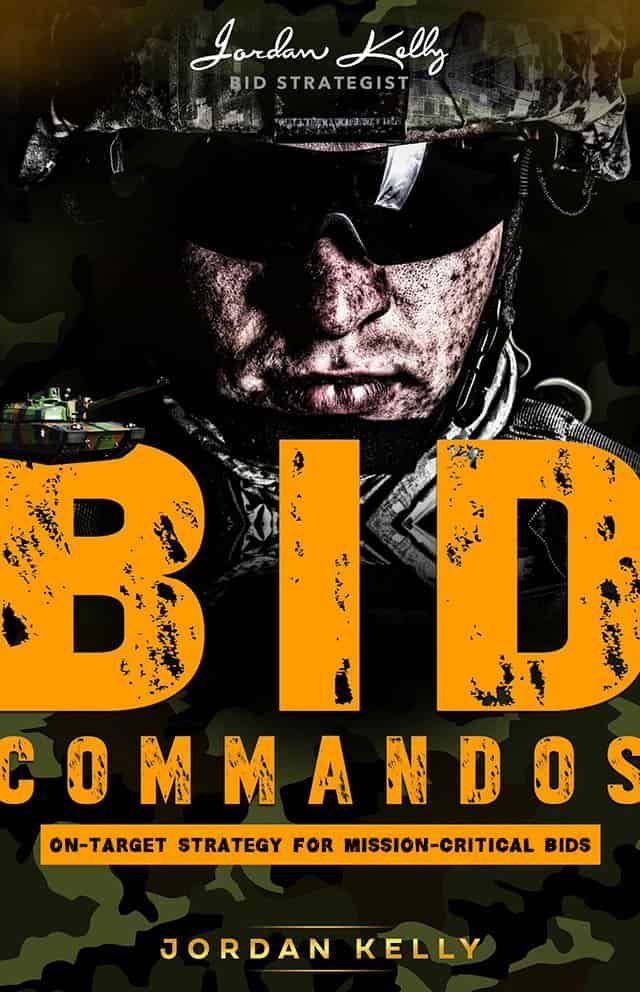CATEGORIES:

This article is a direct follow-on from, ‘The 11 Stages of Competent & Comprehensive Pre-Probity Bid Management’.
Those stages that should be conducted post-release of the RFP are:
Stage One:
Hold a session to ‘reality check’ and finalise the Strategy Document against Expression of Interest or Request for Proposal content and requirements.
It is critical that all participants undertake – prior to this session – their own personal, detailed reading of the market call documentation.
Without this prior study of the document, the first few hours of the session will be soaked up by this exercise or - if the session proceeds without participants having read the EOI or RFP - the only contributors of value to the session will be those whom have read it.
The purpose of the session is to complete and “reality check” the pre-probity-formulated interim strategy document against the client organisation’s actual information and requirements.
Where significant additions or departures are identified, a revised Strategy Document must be issued. (It can reasonably be assumed that, most times, a revised Strategy Document will be necessary.)
Stage Two:
Submit the Bid Strategy Document to senior management for approval.
This is a critical step in ensuring that the underlying strategy and the content of a proposed end submission is not rejected, by senior executives, at the eleventh hour.
Stage Three:
Confirm or modify brief to designers based on above.
With reference to Stage 11: Formulate brief for designers (see ‘The 11 Stages of Competent & Comprehensive Pre-Probity Bid Management'', this earlier “heads up” preparatory brief should now be revised/refined/supplemented and formalised).
Stage Four:
The Strategy Document should be issued to authors, and a writing coaching session should be held for those authors (including subject matter experts) contributing to each submission section.
A bid-specific coaching session is a valuable exercise, to identify the degree of writing competence possessed by each contributor and apportion any assistance resources early and appropriately.
Stage Five:
Early-Stage Review.
The Bid Strategist, along with whomever the Bid Manager has appointed as the editor of the end submission, should review each contributor’s first few paragraphs / first page, to determine whether he or she is “on the right track” with his or her copy.
This allows for the provision of direction and any material input in the early stages, as opposed to the latter stages (which creates editing and re-writing bottlenecks dangerously close to the submission deadline).
Stage Six:
Strategic diagrammatic support identified and briefs given.
Opportunities to support/supplement the written content with diagrammatic and other visual content should be identified, and the relevant subject matter experts pulled in to brief the design team (to whom preliminary relevant copy sections should be provided).
Stage Seven:
Subsequent series of reviews.
Upload of first and subsequent drafts (allow for at least five) by the date identified jointly by the Bid Strategist, Bid Manager and editor.
The number and timeframes for these reviews should be realistic to accommodate the number of Bid Manager/author exchanges that will be necessary to bring copy to Final.
Take into consideration that:
a) Where contributors are not professional writers, considerable redrafting and/or editing will likely be necessary.
b) Where professional writers are producing the content, these writers are unlikely to also be subject matter experts, and revisions to the substance and detail of their copy will likely be necessary when reviewed by the topic experts.
c) Diagrammatic and other visual supplementation should be submitted back to the subject matter experts who briefed the design team. As above, this must be done with plenty of time to allow for several rounds of correctional iterations.
Stage Eight:
The Bid Manager should make a final review of content prior to tabling to the Pursuit Leader and Bid Strategist.
The Bid Manager must ensure the draft submission is technologically sound, as well as comprehensive, in terms of strategy.
If there are significant shortfalls in these areas, the Bid Manager should return the copy to the author for correction and/or completion. It should then be submitted back to the Bid Manager by the author.
After the Bid Manager is satisfied with the soundness and comprehensiveness of the draft in question, the Pursuit Leader and Bid Strategist should be brought back into the review process.
For quality control and consistency purposes, all copy (e.g. case studies, CVs, appendices) – within reason – should be reviewed by the Pursuit Leader and the Bid Strategist.
Stage Nine:
Production of Executive Summary (i.e. towards end of above process, when a more detailed and authoritative picture of the content is known).
Writing a submission’s Executive Summary before the production of the bulk of its content, is illogical.
An Executive Summary should be precisely that i.e. a Summary. Unfortunately, many (if not, most) bidders treat this as either a covering letter or a preamble sales piece.
Stage Ten:
Graphic production and checking.
Review of the various iterations of the graphic design should follow the same basic procedural format as for the review of the written content.
Stage Eleven:
Senior management review/comment.
The bid strategy document should be provided to any reviewing senior management who were not privy to it in the earlier stages, and in plenty of time for each to have read and absorbed it before receiving the proposed end submission for approval.
Meantime, as a refresher, a summarised, key point version of the strategy document should be provided to those whom have already been provided with the fuller version.
Stage Twelve:
Final adjustment and editing to professionally blend in management additions and alterations.
Do not underestimate the potential volume of revisions, additions and subtractions senior management has a propensity to request – especially if the bid involves joint venture partners and, thus, executives from several organisations (who may not be in agreement with each other on matters of detail).
Stage Thirteen:
Insertion of copy into page design framework.
The Pursuit Leader, Bid Strategist and Bid Manager overview the intended final design production, quality-control-checking at the very finest level of detail, before delivery to prospective client organisation.
See: ‘The 11 Stages of Competent & Comprehensive Pre-Probity Bid Management’.
THINK AND WIN BIDS
Winning High-Value, High-Stakes Bids through Superior Questioning, Listening & Thinking Skills
(Book)
Competent bid management relies on the production of a clear and executable bid strategy.
This book lays out the fundamentals that underpin a winning strategy blueprint.
BID COMMANDOS
On-Target Strategy for Mission-Critical Bids

(Training Program)
The 11 detailed Modules of this course cover every step in a bid, from the initial decision to enter into one through to ensuring an effective debriefing at its conclusion.
I have also formulated them such that they can be delivered in "real-time" to guide a live bid.



